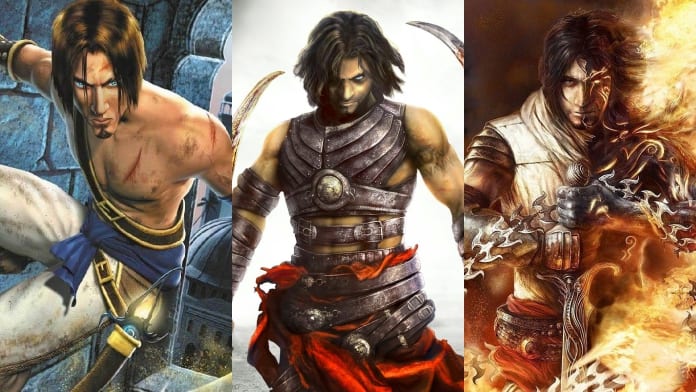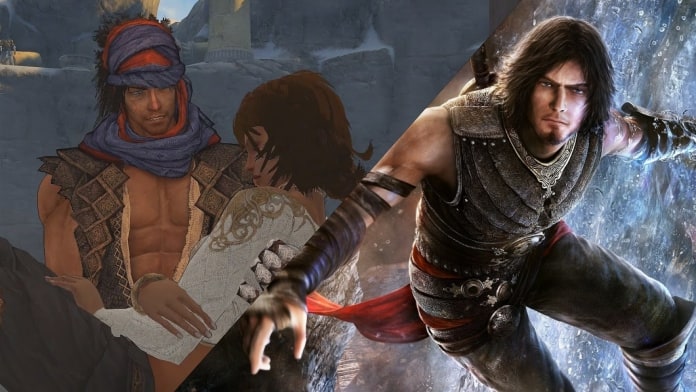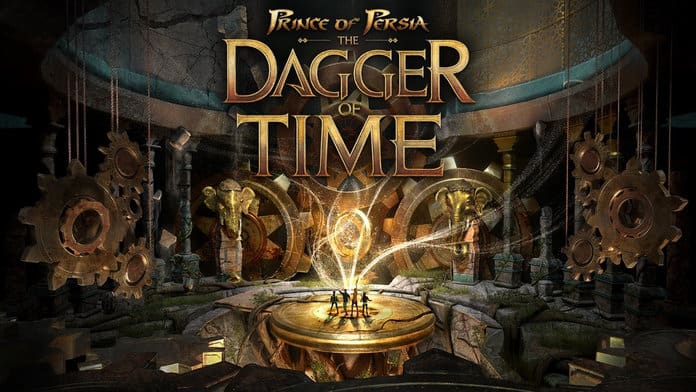Prince of Persia is a series remembered fondly by many, me among them. I was in my early teens when I stumbled upon the games, the current trendy ones. It was then I discovered there were multiple titles dating back to the 90s, and more coming in the following years. Much like the series, Ubisoft was a company that took special care of their games. Each was tended to, with as much detail as possible, and while not all perfect, they were overall good.
Yet the publisher started to be concerned more by money than the actual quality of the games. With each passing year. Blunders like Watch Dogs, and the infamous Assassins Creed Unity, were the last straw, one that entirely transformed them into the greedy bastards they are today. And the Prince was nowhere to be seen for some time; lost, forgotten in this transition. Until now. So before we go into a small sneak peek at the new installment, I would like to revisit the franchise, from its beginning. See just where its downfall began, and how.
The Golden Era
The first game ever made in the series was developed by Brøderbund in the late 80s, on a nano-fiber budget. So much so that all of the animations were done via stock footage of a team member’s brother in a white tunic. Though it was developed a few years prior, the character’s popularity reached its height at the time during the 90s. Most notably on the Super NES, NEC PC-9801, and MS-DOS.
The premise was simple. The Vizier, madly in love with the Princess, throws her preferred beloved into the dungeon. After failing to persuade her to marry him, he gives her an hourglass, and once it runs out, she will die. You, as the Prince, know nothing of this but are still determined to put a shank in the bastard Vizier and save your crush. And thus you set out to do so, all while avoiding traps, pits, and the antagonist’s henchmen.
It was a simple time, where plots were put aside for gameplay. The combat was intentionally stiff, while the platforming demanded precision. Add to that the timer, needed to complete the game to save the Princes, and it provided a decent challenge for some and managed to put off others because of its difficulty. Sill, the studio liked the direction it was going for, inspired by such tales as Aladdin, that it continued with its sequel.
After the Vizier was defeated and the Princess rescued, the two would finally go on to plan their wedding. However, the Vizier, through some shadow magic thing, manages to reemerge in the Prince’s likeness and turns the kingdom against him. After a long journey, with the same set of traps and hazards, but different locals, the spell that binds the Vizier is broken. The two loved ones ride on a carpet into the night, witnessing A WHOLE NEW WORLD.
The First Attempt at 3D
Yet the original story doesn’t end there. After a small battle over the rights to the series, Red Orb Studios took on the franchise for a potential 3rd game. This time, focusing on the same challenge, but transitioning from 2D to 3D. It didn’t get the same amount of love, nor reception as its previous. Tank controls slapped on for movement and combat, making it stiff and boring. The difficulty of some of the traps and variety in weapon controlling made it even worse.
And then there is the plot. Horned in by some truly awful graphics and voice acting, it focused on a scheme to overthrow the Prince of Persia as the new ruler. How did they plan to do that? By marrying the Princes to her cousin, which was for some reason, half-tiger, half-human. No, I give up on this plot, you hear me, I GIVE UP. It was safe to say that the Prince of Persia was gonna take a long rest, and get picked up by a much better studio, which it did.
The Sands Trilogy
Finally, Ubisoft stepped in, fresh from a successful title known as Splinter Cell. It was Ubisoft Montreal that picked up the license and fooled around with it for some time until in 2003, they teased the reboot of the series. It was titled the Sands of Time. Now with much smoother controls, camera movement, and some insane never before seen parkour moves, it captured the attention of many. Some elements, such as the overall theme, traps, and hazards, were still present, but it was a drastic shift from what it once was.
This time depicting the Prince as a pompous ass bent on conquering the world. The Vizier, as the series staple antagonist, takes advantage of this and persuades the Prince to open a magical hourglass that unleashes devastation known as the Sands of Time. The Prince, now determined to undo what the Vizier has done, joins forces with a foreign Princess and heads out.
One of the defining features of the trilogy was the ability to manipulate time in-game. Either slowing down or reversing time to undo some mistakes the player made. This was a feature loved by many and the focus point of the series.
After the defeat of the bad guy and the conclusion of the first game, how do you follow up? Simple, you make your character an edge lord, angsty, and add some heavy metal. Warrior Within followed up on the story but with much darker themes. Those of changing one’s destiny and death, as the protagonist is being chased by a demon determined to kill him for releasing the Sands. The gameplay was mostly the same, with some minor tweaks. And after a few alliances, the Prince of Persia finishes the job and heads home for a relaxing vacation.
However, his vacation is short-lived, as the Vizier once again returns with an army to destroy the Persian Kingdom. Armed to the teeth, and with characters from the previous games mounting a defense, the protagonist faces his foe one final time. However, he is caught by surprise by a burning desire within him.
A twisted morality, hiding inside that allows one to transform into the Dark Prince. With his own unique set of skills. It was a great conclusion to the trilogy, one that didn’t need another entry. But that’s where things start to deviate for Ubisoft. And what came after was letdown after letdown.
The Downfall
To appease the corporate devils, Ubisoft thought the best idea to expand on the series was a full reboot. Taking away all the stuff that made the character so iconic and directing in a new setting. The Prince was still present, but more as a hobo, rather than a prince. The redeeming factor was his voice actor, the amazingly talented Nolan North.
Yet instead of an empire to save, this prince was on a quest to combat some shadowy figure, bent on ruling a crumbled empire. Stripped of all the powers he possessed in the previous trilogy, the main source of his abilities came from his partner Elika.
Deprived of any real challenge, and the same repetitive combat polarized many fans of the established parkour king. Add to that an epilogue that was released separately as DLC, and many saw how twisted it became.
This was somewhat due to the development team shifting to make a new game, one that became a global behemoth. The Assassin’s Creed series was born, and the Prince was all but forgotten, being overshadowed by his new sibling. With the mixed reception of the 2008 reboot and lack of sales, this was ever so evident. I seemed that like all big games who failed to reform with the end of the decade, that its time was up. There were some attempted spin-offs on the NDS, but never a full sequel.
It was at the beginning of the previous decade that one final attempt was placed in Ubisoft Montreal’s hands. To be honest, Prince of Persia: The Forgotten Sands is a pointless sequel. It was sold off as a part of the Sands Trilogy. But aside from some improvements in the combat, and an overall mediocre story, it achieved nothing. It’s like it didn’t exist.
Set between the first and second game of the trilogy, it tried to fill the gaps between the story but didn’t give any connection to the whole plot. On top of that, time usage has been boiled down to some strange water powers, that didn’t really provide much. It was a pointless sequel that just existed in between.
The Present
After a couple of iOS ports of the original games, some teases via Twitter from the studio, Ubisoft proudly announces Prince of Persia: The Dagger of Time. An escape room VR game…Wait. WHAT? Yes, it turns out that Ubisoft had a plan for the series. That being to crush it down into a mush. To devoid it from any sense of dignity and creativity. Sure it can be enjoyable with a couple of friends for a quick laugh, but is this what a beloved franchise has come too? I’m not even mad, I’m confused by it.
To know that massive demand for a new entry exists out there and to not take advantage of it. Technology has improved, the series could innovate much like Assassin’s Creed did. But instead, the milk has run dry for some time now. All that is left is a few more drops out of a small VR releases. It’s sad really to see such corporate practices that focus more on money and profiting from a milked franchise than an actually good game. So long sweet Prince, you are forever lost to the sea of Time.
- The Importance of Clara Zetkin for International Women’s Day - March 8, 2020
- Tatsuro Yamashita aka The King of City Pop - March 1, 2020
- Samurai Jack: Battle Through Time Announced for 2020 - February 25, 2020





